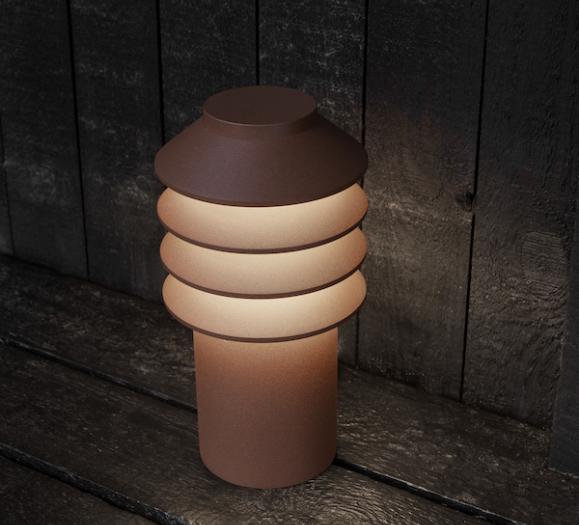I do like to touch on landscaping lighting design now and again. It’s important because it is what creates a wonderful first impression of a home. When done well it can also help expand the sense of space beyond the walls of a home. Additionally, outdoor seating areas can be created to offer an alfresco entertainment space, which is a good option in these Covidian times.
Also, having landscape lighting helps keep a building from feeling too enclosed at night because your view goes beyond the windows just as you are used to them doing during the day. When there is little or no light outside then the windows become reflective black mirrors at night. You end up seeing your own reflection instead of the view beyond. By balancing the lighting inside and out, your eye can travel beyond the glass. There’s also a sense of safety because you can look out the window and see what’s out there instead of trying to peer into the blackness.
Let’s hone in on plantings that are used in a desert setting. This can be very different to what we would imagine is part of a more traditional garden. For decades people tried to recreate their flower-heavy gardens in the desert communities to which they had moved. This took a tremendous amount of water and brought allergy-inducing plants into the region. Now the trend toward using drought-tolerant plants has allowed the desert to keep a foothold in residential communities.
To generalize a little bit, East Coast and Central US gardens are often comprised of flowers and deciduous trees. The thickness of their leaves varies so that lighting can add a translucence to the greenery, allowing the trees to have a glow at night. As you go into the Southwest you will see native gardens being primarily made up of cacti and succulents. This type of greenery has much more opacity. Light bounces off them, not through them. Backlighting can sometimes enhance the look of the prickly parts, as well as the sculptural quality of the plantings themselves.
This type of garden, as well as more traditional gardens, benefit from using a variety of light sources. Lighting from above creates what is called the moonlighting effect, as if the space were being illuminated by a full moon. This creates dapple patterns of light and shadow onto pathways and planting beds which is a much more naturalistic way of illuminating.
Next in the mix you can add uplighting, aka accent lighting. This helps give some visual height to planting areas. Try not to use too much uplighting, otherwise it will end up looking a bit commercial.
Additionally, you can add pathway lighting, especially on steps or irregular pavers, to get people safely from one area to another. The last element is decorative lighting. Adding wall mounted fixtures, hanging fixtures or tall lanterns help give the illusion that they are what are providing the area illumination. In reality, they should just be a gentle glow of illumination. Just think of them as architectural jewelry
With desert gardens I would recommend going to a cooler color temperature than the standard 2700° kelvin. I would recommend 3000° kelvin which will enhance the greens, and bluish grays of the cacti and succulents.

From a distance this planting area has really good visual impact. Lighting from above, mounted on the building façade, illuminates the canopy of the Palos Verde tree. Uplighting enhances the shape of the various cacti, along with the agave. The ground mounted accent lights are finished a matte sand color to help them blend in with the gravel ground cover

A close-up shot shows the LED directional fixture. It has a snoot which helps hide the light source from view. The cool color temperature lends itself to the greens and silvery blues. It also rakes illumination across the gravel ground cover, picking up the texture.

The general fill light, coming from directional fixtures mounted on the building façade, keeps this planting area from looking too spotty. Up lighting of the saguaro cactus and the ocotillo add effective visual height. These tall plantings are not lit directly at the bottom but instead have fixtures that are mounted 30 inches to 48 inches away from the base of the planting so that there isn’t a hotspot at the base.

You may notice a water feature running through the center. There is no lighting in the pond, otherwise people would see all the detritus. It’s much better as a reflecting pond.
*All photos courtesy of Randall Whitehead.







